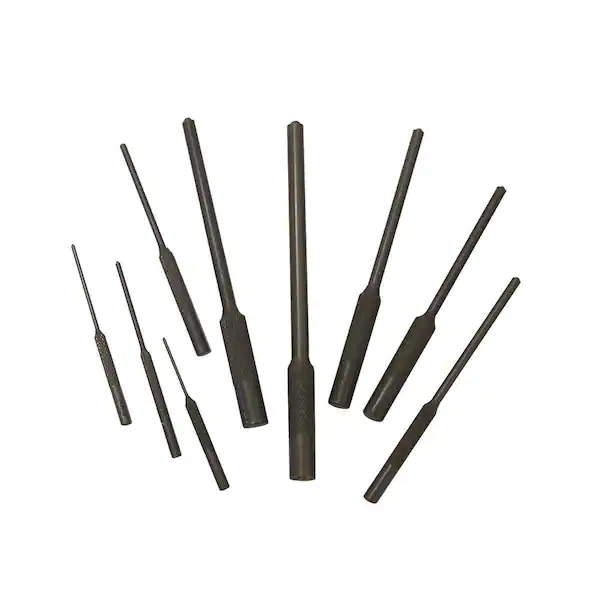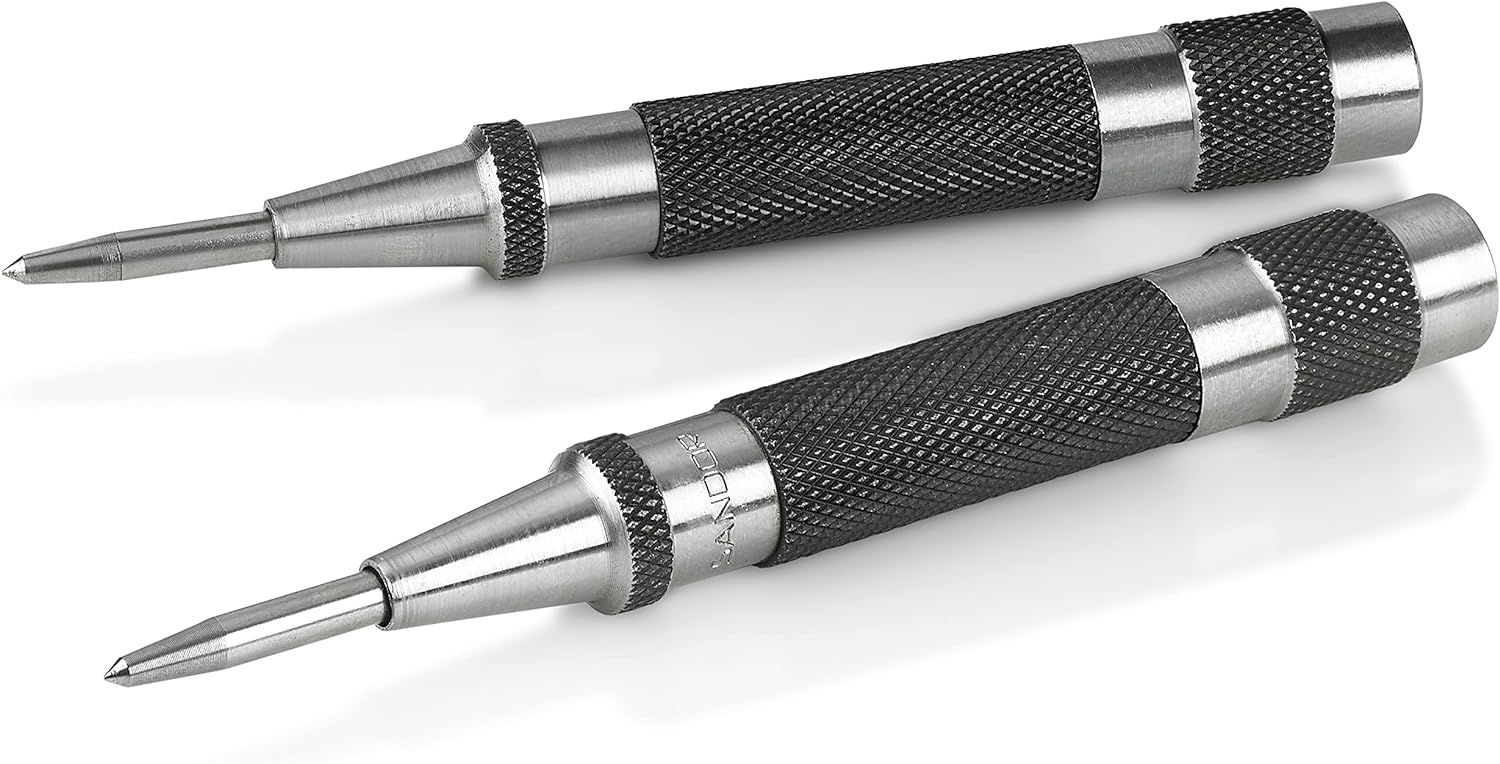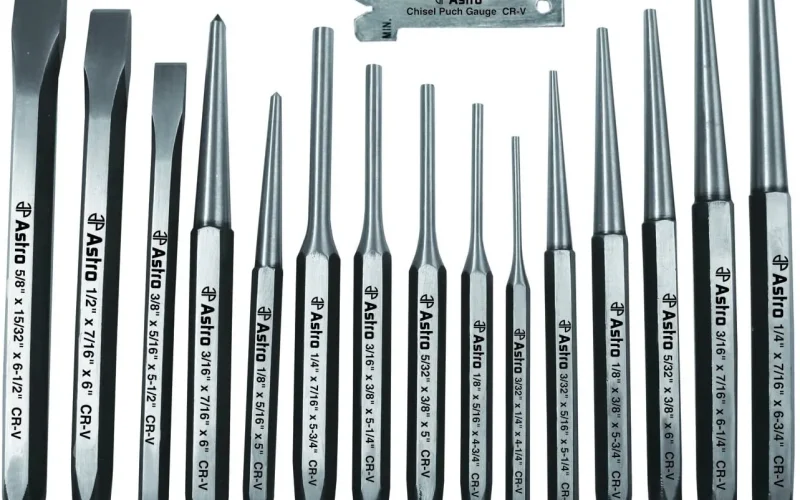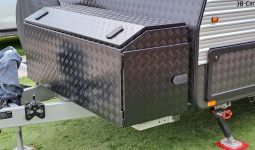Punch tools are very useful in the world of DIY and craft projects. From punching holes in paper to creating custom notepads or decorative tags.
With so many different types of punches available, it can be hard to decide which one will be best for your next project. Even if you need one at all!
To help you out, here’s an overview of the main types of punches that you’ll encounter and what they’re good for.
If you’re interested in DIY projects or home improvement, then you’ve probably already heard of different types of punches. Some of the most common are center punches.
These create holes in wood, soft materials, and nail sets. Hardened steel is used to drive nails flush with their surrounding surfaces.
If you need additional information on these and other similar tools, please keep reading to learn more!
Different Types of Punches Tool
1. Automatic Punch
Punch tools allow you to punch holes in paper, cardstock, vinyl, foam board, and more. Automatic punch tools allow you to quickly and easily make consistent holes that can be used for various purposes.
The punches included with most sets range from 1/8 inch (3 mm) up to 1-1/2 inch (38 mm). Automatic punching tools are easy for both kids and adults to use.
Partly because they work by turning a handle with your hand or foot until you have reached the desired length.
Also, they’re perfect for making straight, even rows on bulletin boards or project boards. They are also great for marking lines through pre-purchased papers or cards for precise cutting.
2. Hollow Punch
Hollow punches are primarily used to create circles and round edges on sheets. They are also among the types of punches used to create rivet heads.
The type of punch determines the diameter that a hollow punch can cut. This typically ranges from 3/8 inches to 2 inches.
Also, hollow punches are popularly used in the military and aerospace industries. They are used as a perfect way to create rivet heads or holes for hinges or screws.
They are versatile tools, offering many punch sizes and shapes, from straight pins to curves. Smaller tools typically allow for deeper cuts with sharper edges than larger ones.
An advantage is that the depth stop on most punch presses ensures each hole drilled is the same depth at all times.
3. Letter Punch
Letter punches, or letter piercers, are also known as cold chisels. They’re versatile because they can punch through both thick and thin metal.
Letter punches are normally used in the beginning stages of fabrication.
Also, when multiple punches are needed on one part, that can only be done with a punch.
Another common use for letter punches is when you want to create a finished appearance by punching out small indentations in steel paneling or car door panels.
This is one type of punch that can form letters, shapes, and basic patterns without using a press brake or roll crimper.
4. Tablet Punch
You may wonder how a tablet punch will help you if you’re not an inventor or industrial designer. The answer is pretty simple.
It allows you to quickly create prototype pieces used in user-centered design processes, whether qualitative or quantitative research.
Since a tablet punch is essentially just an advanced paper cutter, its use doesn’t require any skill set beyond basic office productivity software. You’re probably already familiar with some aspects of it.
You import your design into software like Adobe Illustrator and create a cutting template on your tablet device.
Once the template is complete, it’s time to make a few swipes with the stylus, and voila! A three-dimensional piece emerges from the device’s ‘toilet roll’ chute.
5. Bell Punch
Bell punches are types of punches used to create holes in metal. They use a sharp striking implement, such as a hammer and a punch, to drive punches through the metal into the base material.
However, some manufacturers provide electric apparatuses for this purpose. A cap is often placed over the punched area, flattened by more striking.
This produces an outline that corresponds with the size and shape of the hole being made.
Afterward, the cap must be opened or cut off so that its inside surface doesn’t touch or cover any part of the hole-cutting process.
A spring fixes a punch in this circumference. A die creates different types of holes. Various types of bell punches are available on the market today.
One example is hand-operated bell punches. These tools produce uniform round hole openings and sometimes come with depth gauges.
Another example is an automatic punch machine. These devices are usually integrated into production lines.
Also, movable die sets allow them to make several different sizes simultaneously.
For example, they could make 3/8 and 1/2 circles simultaneously without swapping out dies.
6. Dot Punch
Dot punches make very specific punches you don’t want to confuse with other types. They are specifically designed to make small marks on your project.
Imagine the shape and size of the punch as a dot, hence the name dot punch. The hole punched out from the metal plate can be as small as 1mm or as large as 5mm in diameter.
This would make it one of the smallest-sized punches on this list of types of punches. The metal plate is even shaped like a little dot!
7. Roll Pin Punch

A roll pin punch is a type of punching tool for basic punching or drilling.
Like a nail punch, it is also a good choice if you need something strong enough to bust through metal.
However, this type of punch tool isn’t designed for heavy-duty work.
Also, it typically doesn’t come with an attached hammer, which can be really helpful because it makes the job a lot easier.
They’re not usually used as often. They’re an important part of any DIYer’s kits. It should be considered if you’re looking for a new tool.
8. Pin Punch
Punch tools are used to create holes in metal or other materials. Unlike other punches, pin punches typically have a single pointed tip at the end that’s a round taper.
When struck with a hammer, the pin punch can produce clean holes in material up to 2 thick and 3/4 deep.
The most common type of pin punches is the ball nose style. It is combined with an expander die to create a series of side-by-side holes.
Each time you strike the punch with your hammer, it enlarges one hole until there are multiple aligned holes (pilot drill).
9. Drive Punch
What Is a Drive Punch? A drive punch is a tool for punching small holes in various materials. It typically has one pointed end and one squared end.
Although some punches may be L-shaped with the square end on the inside (rather than the outside).
These punches are generally used for small gauge metals and can also be used on lighter gauge metals.
They have an opening at the pointed end that widens as it approaches the handle.
The shape helps when working with wire and light gauges of metal.
10. Transfer Punch
A transfer punch is a unique and versatile tool that punches holes in one workpiece while stamping or transferring an image or pattern onto another.
Transfer punches are available in both standard, die sets, and matrices.
Standard transfer punches punch a line pattern into the edge of the paper.
This can then be transferred onto a printed piece to produce varying line patterns, like a herringbone design.
Die sets create repeat designs, such as feather pattern lines. A matrix works similarly to die sets but with more variety in design options. These more intricate designs can be made on rubber mats and paper.
11. Solid Punch
A solid punch is designed to create a hole. It’s also called a punch tool or puncher.
A solid punch is versatile and can be used for many tasks, from stamping, cutting, punching holes, marking, and more.
These are used in different measurements according to the jobs that need to be done.
Some types of punches come with multiple blades. This makes it possible to use them for various purposes.
Since there are so many types of punches on the market, you should research them and decide what would work best for your particular project before purchasing one.
Not all punch tools will work well with all materials, such as metal or leather.
12. Prick Punch
A prick punch is a tool with a pointed, sharp blade that punches small holes in the fabric.
It can be helpful when easing the needle through tough or thick fibers.
Prick punches can vary in size, from 3mm to 12mm, depending on the size of the hole you need.
The larger the needle, the larger the hole a prick punch will make.
It’s important not to use the same needle for crewel work and silk embroidery.
This could result in too big stitches for your fabric and cause it to travel at the edges or unravel completely!
13. Center Punch

A center punch is a metal tool that creates an indentation on the surface of a material.
It is used in metalworking and other construction trades to mark the center point for drilling, scraping, or chipping away material.
The indentation serves as a guide for drilling or scraping straight down without losing accuracy.
A center punch can also be used to mark sheet metal so it can be cut accurately with tin snips. Its length is 35 mm to 125 mm, and its width is 4 to 12 mm.
It has a cylindrical shank at one end, usually with a hemispherical or conical head, and a typically flat punch head at the other end.
It may also have small protrusions around its circumference to draw out rivets when punching holes.
Precautions for Using Punch
Here are some things you should be aware of before using a punch:
- Make sure the workpiece has enough room and space for the punch so it doesn’t cause splintering.
- When using the punch, keep your hands close to the hole so you don’t accidentally touch the sharp edges.
- Punching large areas at once can be difficult, especially if they have angles or curves. Be careful not to injure yourself. Punching is best done on an even surface.
- When you are finished punching out your desired area, clean off all dirt and debris. They might have accumulated around the hole to prevent any rusting or corrosion from forming inside the tool.
- You can also rub oil onto the handle to keep it nice and smooth. If you are storing this particular punch, wrap it tightly in cloth or newspaper.
- If your punches start sticking after a few uses, use sandpaper or steel wool to make them smooth again. Remember, these types of punches are only as good as their condition.








